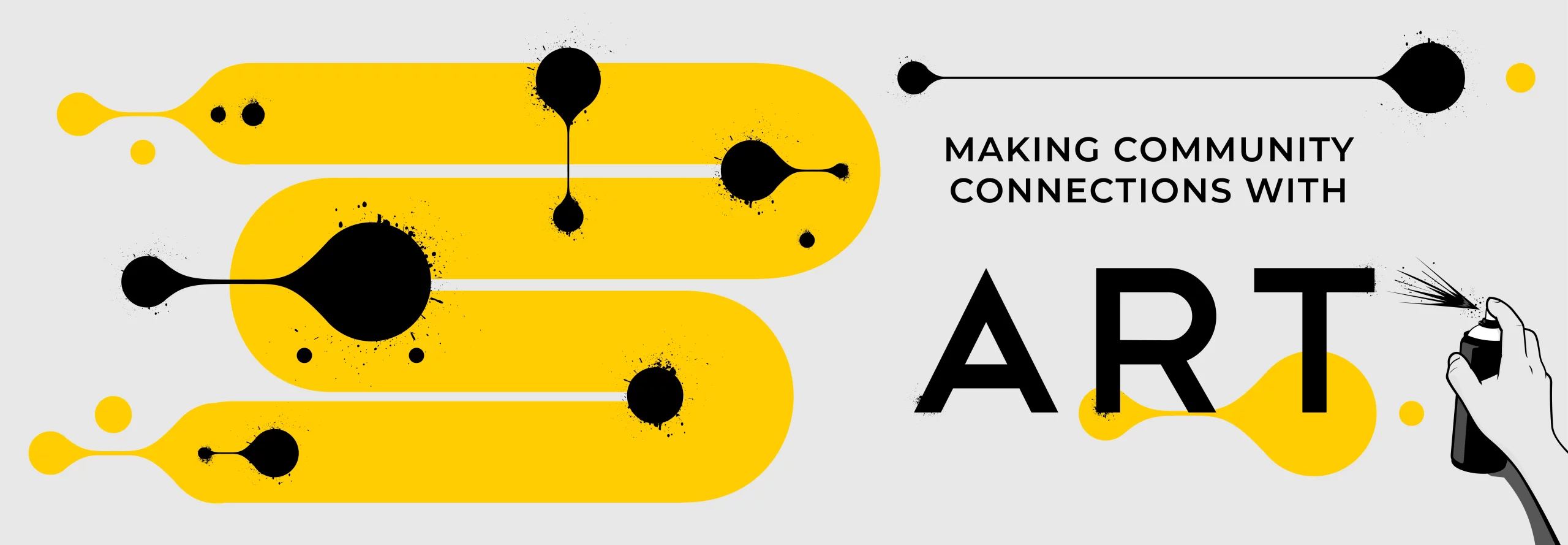For decades, corporations like IBM and JP Morgan Chase have been investing in art pieces for their buildings, some building up very large art collections. Much of that art, though, has been off-limits to the general public. Today, art is becoming more accessible and equitable, spilling out into the streets and featuring everyone from local to national artists and amateurs to the very famous.
We are seeing a bigger interest in authenticity in urban art in our public spaces, especially as the trend moves toward showcasing urban murals and street art. And we’re seeing art as a medium for drawing together the public and private and blurring those lines a bit more,” said Bill Halter, architect and Principal of the Office Workplace Studio at Cooper Carry.
Street art’s influence on design continues to grow. For its renovation of Midtown High School in Atlanta, Cooper Carry commissioned an art piece to increase student interest in using the school’s media center. Local graffiti artist and alum of the school Alex Brewer, a.k.a. Hense, crafted an abstract, color-filled design that defines the two-story space.
Street art isn’t just for schools, sidewalks, and funky neighborhoods though. A growing number of cities are looking at adopting municipal policies that encourage urban art. The stark stereotypes of office buildings make them ripe for adding art to design, which promotes culture, creativity, and work performance.
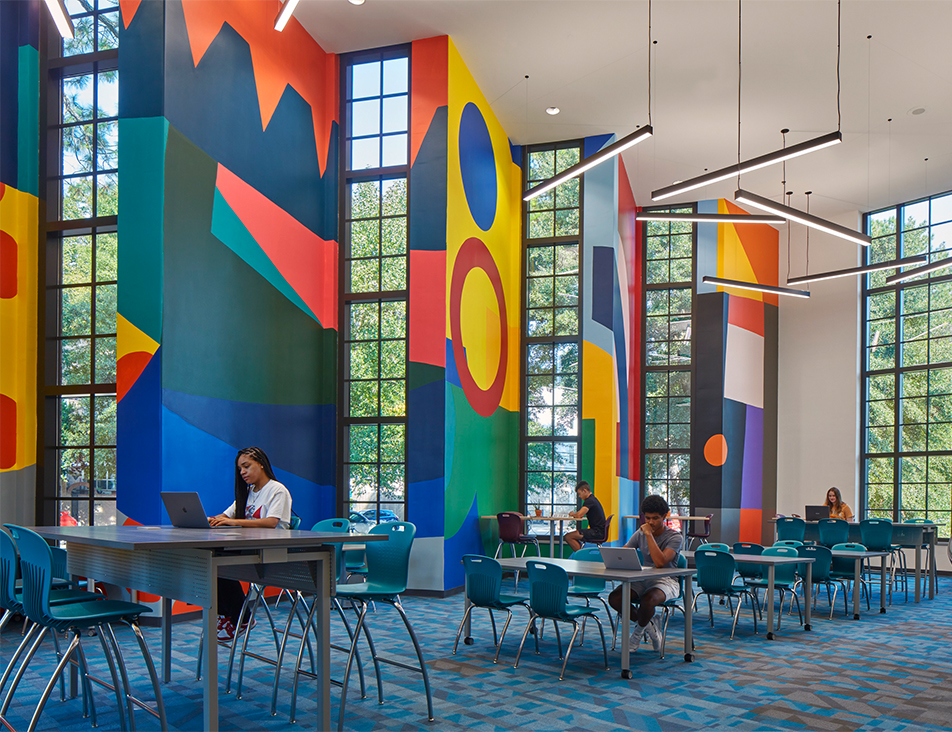
Art is becoming a conscientious, intentional part of the design process,” said Mike Service, Associate Principal. “After all, at a fundamental level, art tells the story of a community, and it can help ground a business community to a site and shouldn’t be an afterthought for vacant spaces.”
Art in Action: Midtown Union
Midtown Union, a $1 billion mixed-use project in Atlanta that just completed, is located in the heart of the city’s arts community, with Savannah College of Art and Design (SCAD) to the north and Woodruff Arts Center to the east. The mixed-use development consists of a 26-story, Class AA office building, an 18-story residential tower, a 12-story Kimpton Shane Hotel, 30,000 square feet of retail, and ample parking to accommodate all the property ventures.
Cooper Carry embraced the arts-focused context of this part of the city when designing Midtown Union. They reached out to SCAD seeking a graduate who could create a defining feature for the project. Architect-turned-artist Joe Dreher a.k.a. JOEKINGATL was picked for the job.
When you create a mural in a community, there is a sensitivity needed to connect with the community and the place,” said Dreher. “You can’t just find an empty building and paint anything on it. People know when art is genuine and when it isn’t. I think Cooper Carry and the developers, Granite Properties and MetLife Investment Management, did a good job of understanding the need for authenticity. There was a balance to create something that would have long-term meaning for the building and the community.”
Dreher took inspiration from the “union” in Midtown Union to create a multidimensional design of faces: two on the south side and four on the north side of the building, near the parking garage. Collectively spanning more than 7,500 square feet, the faces come from snapshots of Joe and his wife and track the progression of time through their face shapes. The installation is eye-catching from afar, its nuance jumps off the page as you walk around the building. It transforms the silhouette of the facade due to its unique L-shape.
A lot of times there’s a harshness to the urban environment, where you’re just surrounded by all these big objects that aren’t really speaking to you as an individual,” said Dreher. “The buildings are at one scale and the pedestrians are at another scale, and I think the art helps humanize the space. Art puts a face on the building (at times, literally).”
The mural impacted several elements of the building’s design. First, lighting was provided so the design could be enjoyed at all hours. Second, the mural informed the design of the parking deck facade. Challenged with a very tight budget for cladding, our team embraced the abstract nature of the mural and created the illusion of a dimensional surface from gray and yellow accent colors carried through other portions of the project.
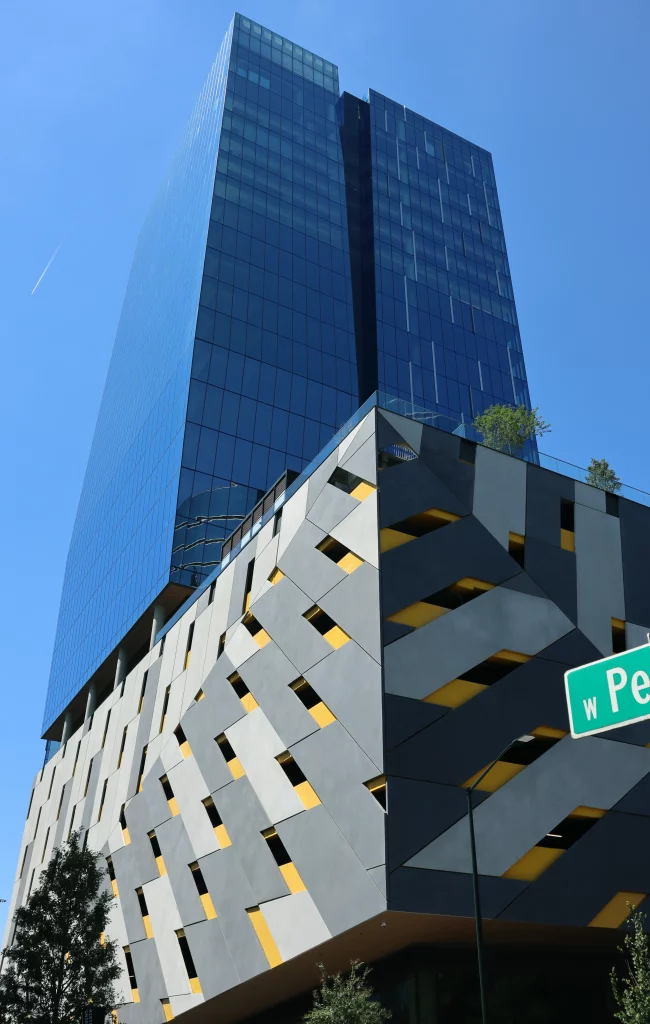
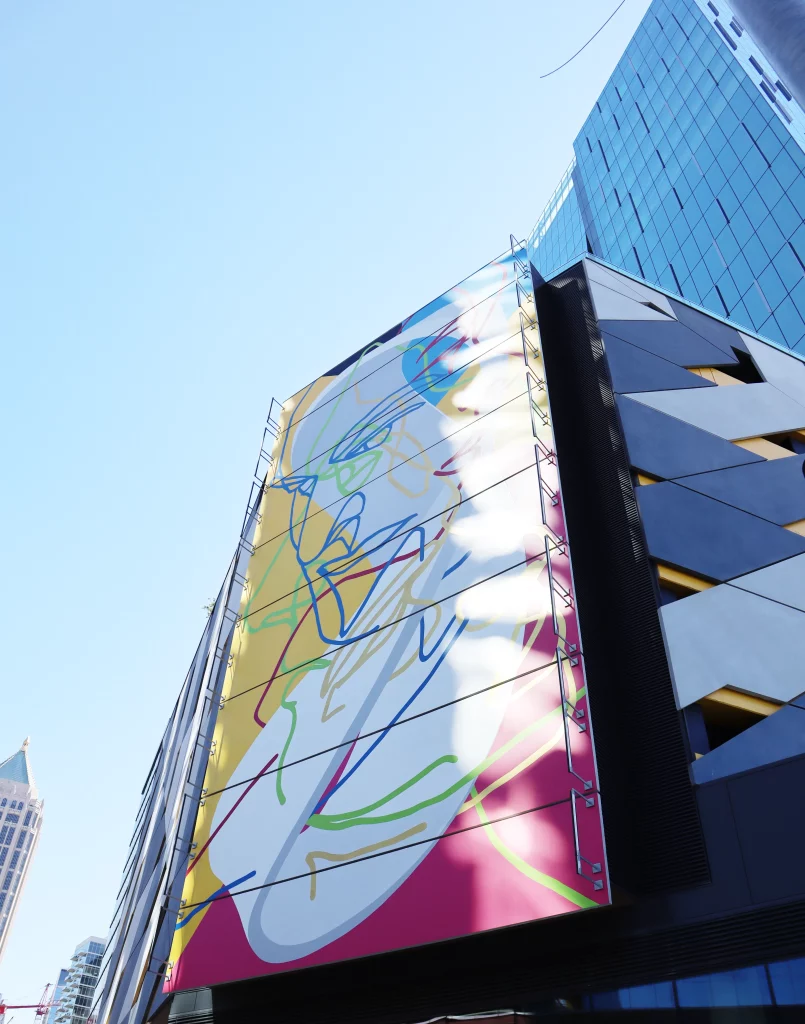
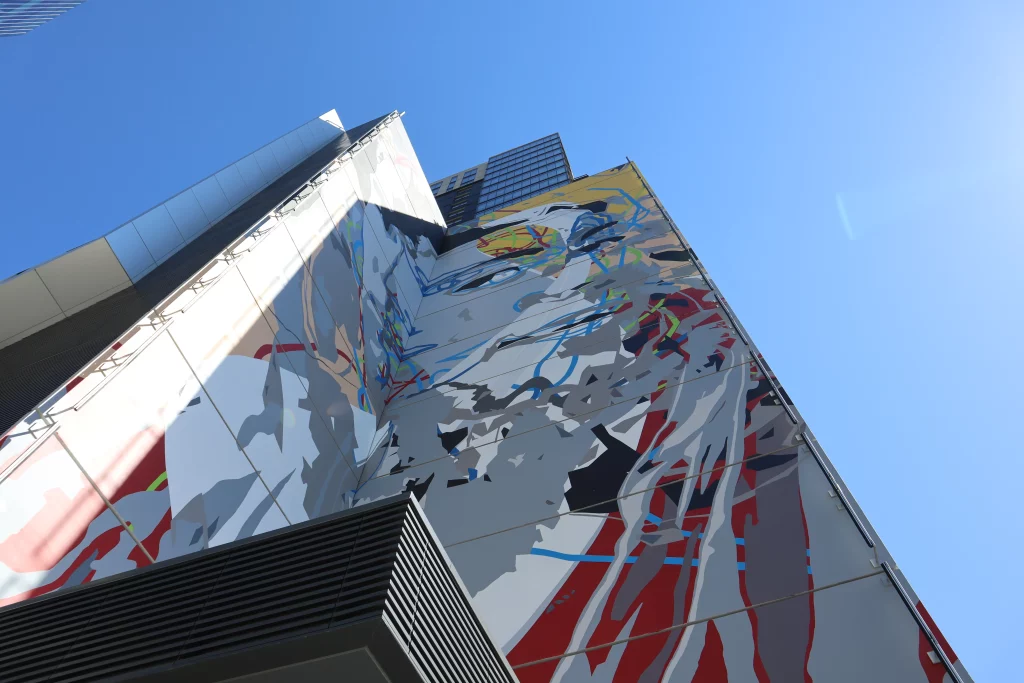
Excitement over Midtown Union has built since it’s inception. The design and amenities at this show-stopping building have attracted financial management company Invesco, who will relocate their headquarters to the building at the end of 2022.
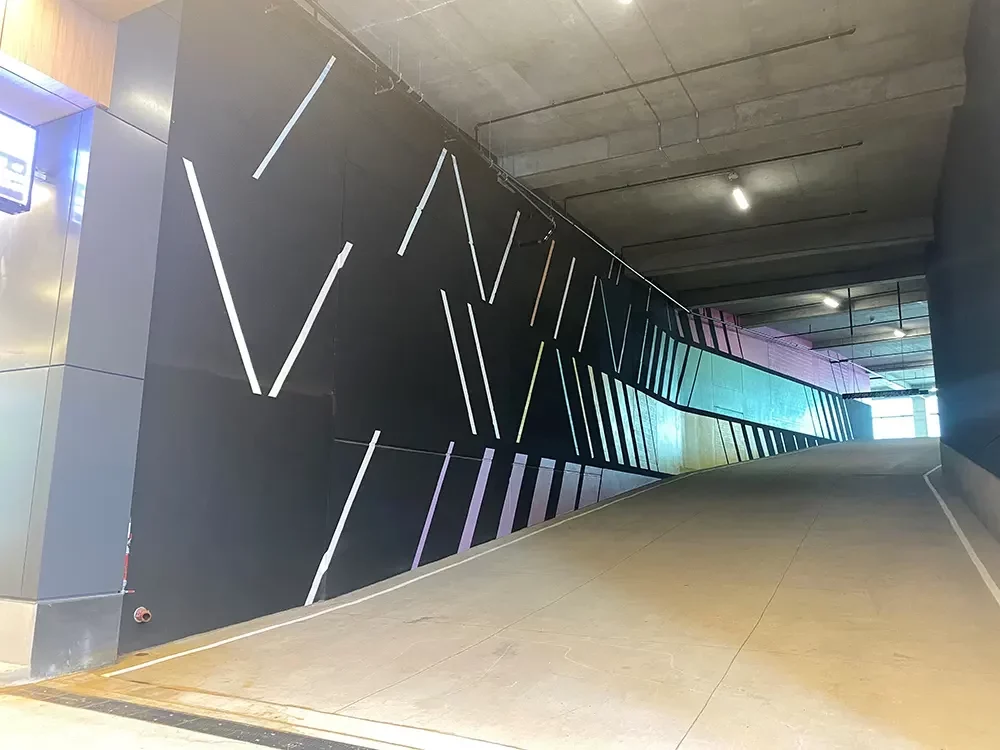
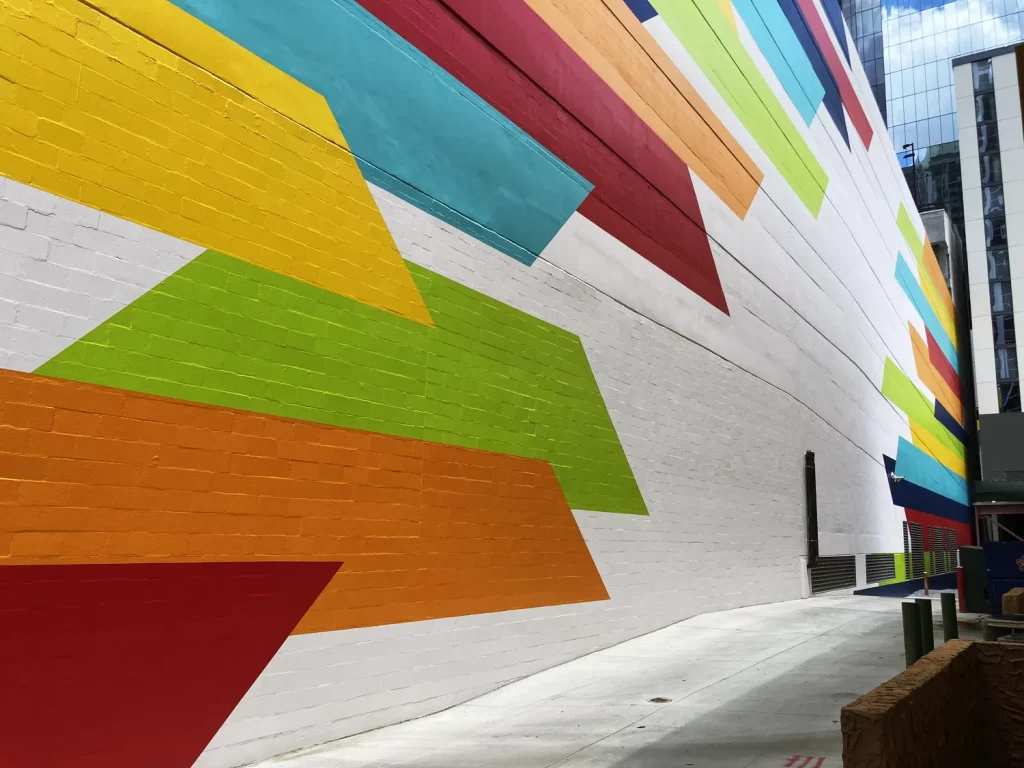
The Future of Public Art
Clients are looking to go beyond murals and sculptures in terms of public art. It’s about getting away from the flat representations and thinking through the experience of the space for the community,” says Service.
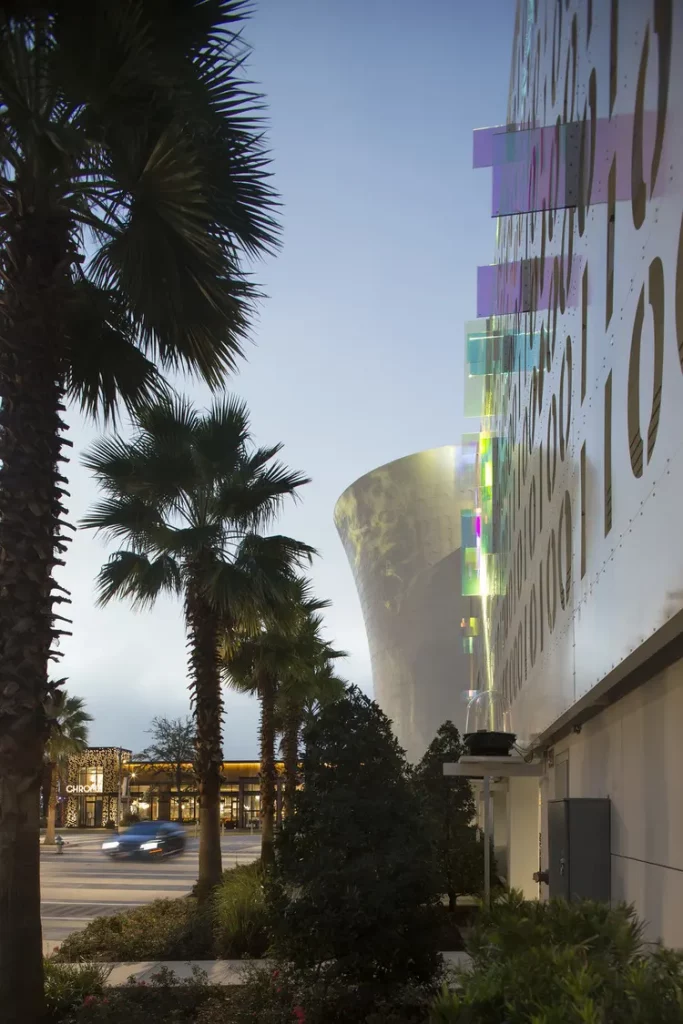
At the mixed-use Lake Nona community in Orlando. Cooper Carry designed the cladding of a parking deck in the project to connect to the arts community, creating a vibrant and distinctive solution of color, form, and voids that change as you walk the site. Working with Miami-based artist JEFRË, the parking deck cladding creates a message in binary code – the waterjet-cut metal panels are scannable so visitors can actually scan the location and see a message on their cell phones. A six-story video art installation with projected images known as the “The Beacon,” encourages user gatherings in the outdoor seating area. Since it’s completion in 2016, this mixed-use community has continued to boom with art and sculpture.
Artistic uses of lighting on a building exterior can modernize the façade without the expense of recladding. Our team did this at The Commons of Lake Hearn, where the frame-like lights made the building stand out against similar medical office parks in the area. Read more about that 1980s medical building’s transformation here.
Projection mapping and other digital technologies provide the opportunity to see the built environment in a new way as well. At the under-renovation Miracle Mile Shops in Las Vegas, we are experimenting with this in a retail setting through a partnership with Digital Kitchen, known for its Emmy-winning title sequences and immersive experiences. The revamped mall space will feature a spectacle of sensory experiences, incorporating light and video around the theme of natural elements.
Art creates a personal local touch to buildings and places, connecting them to the community, and, frankly, it just makes them more appealing. Imagine you are at an outdoor cafe and you look across the way and see a big splash of color or a large scale painting instead of just seeing a building façade. It creates a different kind of emotion,” said Halter.
Feeling inspired? Let Cooper Carry help you create a mixed-use space that promotes art in architecture.
